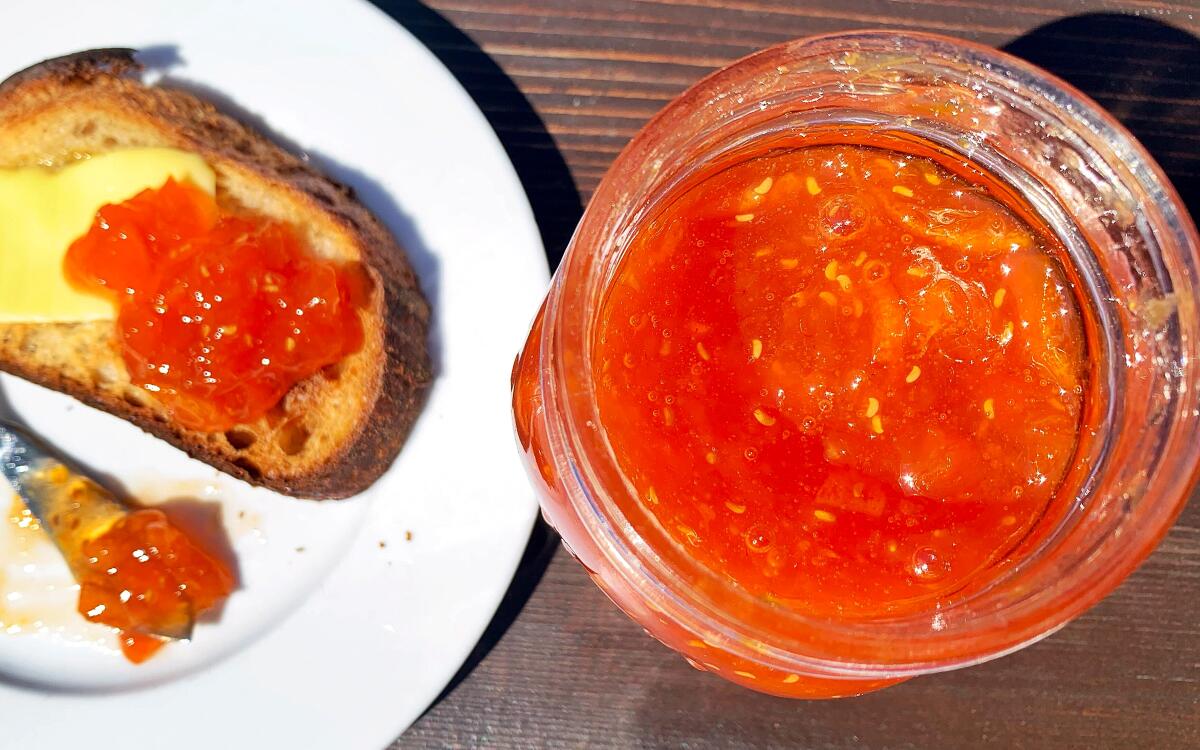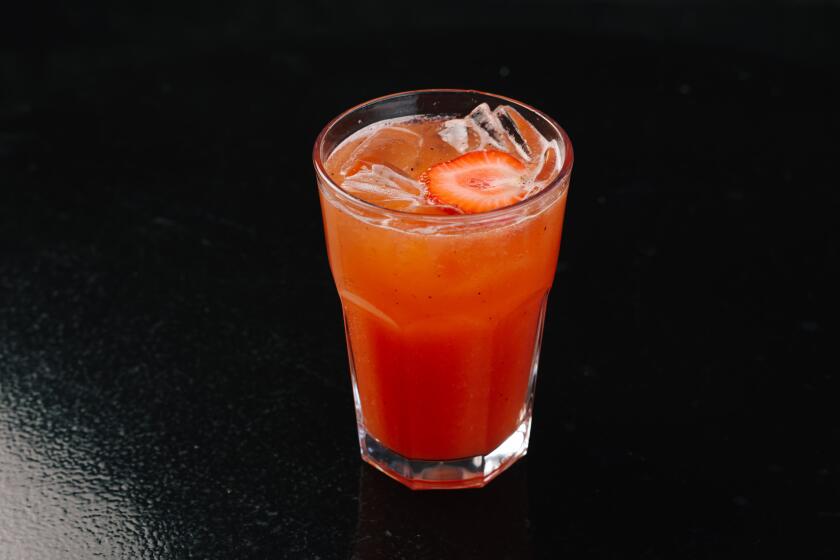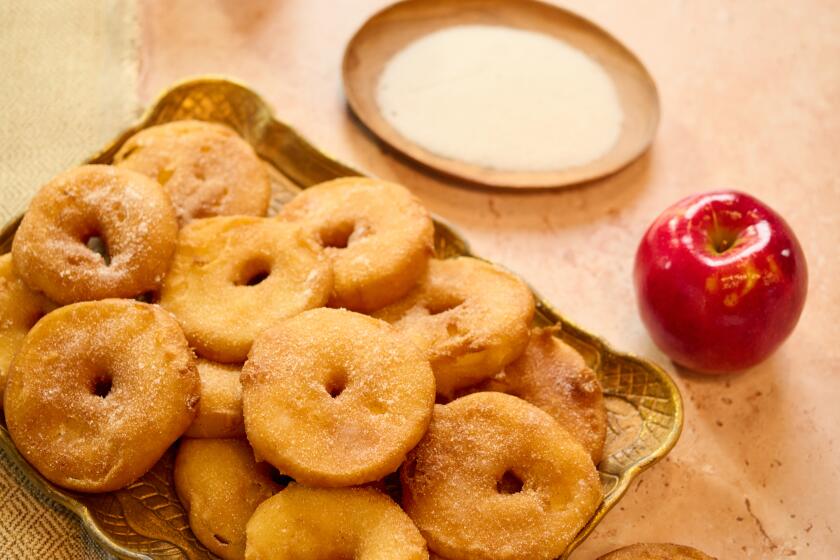Citrus Marmalade

- Share via
Tangy and loaded with candied peel, this marmalade is as delicious on toast as it is over grilled pork. The tastier the fruit, the better the marmalade, so use citrus you like eating fresh. Stick with one or mix and match whatever you find.
Place the sweet citrus and lemon in a colander. If they have wax on them, turn your kitchen tap to the hottest setting and run the hot water over them while shaking the colander. Whether waxed or unwaxed, run cool water over the citrus while scrubbing them with a vegetable brush. Drain well, then trim and discard the stem ends of the sweet citrus; reserve the lemon. Cut the sweet citrus, including the pith and peel, into a ¼-inch dice, discarding any seeds. Transfer the cut fruit and any accumulated juices to a large saucepan.
Using a Microplane grater, zest the lemon directly over the cut fruit. Squeeze the juice from the lemon and add to the saucepan. Add enough water to cover the fruit, about 6 cups, then bring to a boil over high heat. Reduce the heat to medium-low to maintain a steady simmer and cook, stirring occasionally, until the fruit peel is very soft, 40 to 45 minutes.
Meanwhile, bring a large, wide pot of water to a boil. Using tongs, carefully lower 6 (half-pint) canning jars into the boiling water. Immerse the ladle or spoon you’re going to use for filling the jars too. Boil for 10 minutes, then drop in the jars’ lids and remove from the heat. Keep everything in the hot water until ready to use.
Raise the heat under the fruit to bring the mixture back to a rapid boil. Clip in a candy thermometer if you have one. If not, put a large metal spoon in the freezer. Add the sugar and stir carefully to evenly incorporate it. Continue boiling and stirring often until the mixture reaches 220 degrees F for a runnier marmalade or 223 degrees F for a stiffer one, 25 to 30 minutes. To test its doneness without a thermometer, drop a dollop onto the spoon from the freezer. Let it sit for 15 seconds, then tilt the spoon. That will be the consistency of the finished product. A stiff marmalade won’t budge and a looser one will move like lava.
Transfer the jars from the hot water to a clean kitchen towel on the counter. Shake out any water inside, then divide the marmalade among the jars with the sterilized ladle, filling them to ½ inch from the top. If any spills onto the threads, dip a clean paper towel into the hot water and wipe off any stickiness. Screw on the lids until just tight.
If you have a jar rack or other metal rack that fits in the pot, center it in the hot water. Otherwise, push a clean kitchen towel against the bottom of the pot. Bring the water back to a boil, then carefully lower in the filled jars with canning clamps or tongs, making sure they don’t touch each other. The water should be at least an inch above the jars. If not, add more.
Boil for 10 minutes, then remove from the heat. Using the clamps or tongs, carefully transfer the jars back to the kitchen towel on the counter. Let stand for at least a day before opening. When the jars are room temperature, label with the date and the types of fruits you used. As the jars continue to cool, you should hear the lids pop. If any don’t, that means they didn’t seal properly and won’t be shelf-stable, so transfer those jars to the refrigerator after they’ve cooled to room temperature and eat within four months.
Get our Cooking newsletter.
Your roundup of inspiring recipes and kitchen tricks.
You may occasionally receive promotional content from the Los Angeles Times.
















